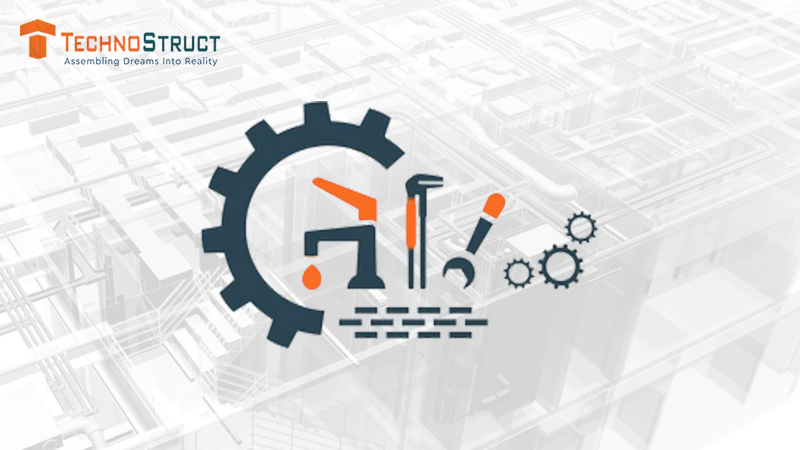
Landscape architecture is the process of studying, designing, developing, and decorating a park, garden, ground, or any other outdoor space. This procedure aims to create a natural setting around cities and buildings to enhance nature.
It involves the elements of environment, art, sociology, architecture, and engineering. Franklin Delano Roosevelt Memorial in Washington, D.C., and Central Park in New York are a few of the major examples of landscape design.
BIM (Building Information Modeling) technology has made its way into landscape design and is proving very beneficial. In this blog, let’s discover the benefits of using BIM in landscape architecture, challenges in its implementation and the best software to create it.
What is BIM in Landscape Architecture?
BIM is a digital approach that AEC industry experts have been leveraging to create intricate and data-rich 3D models of construction projects. This technology has a long association with architectural and structural design. However, using it for landscape design is a new trend.
Benefits of BIM in Landscape Architecture
Better Collaboration
Collaboration is essential for the success of any AEC project. BIM is a futuristic technology that helps improve communication among architects, engineers, other professionals, and project stakeholders. Enhanced collaboration results in the desired project outcome.
Data-rich Models
Building Information Modeling (BIM) offers substantial data about the various elements of landscape design. This leading-edge technology allows users to learn about materials, costs, and maintenance requirements.
Furthermore, you can obtain rich information regarding various objects involved in landscape architecture such as a tree. BIM in landscape architecture can offer data on the tree’s scientific name, environmental factors and root sizes, etc.
Additionally, information like the need for sunlight and water, mature height, and spread is easily accessible.
Revit Families
Revit families are the pre-inbuilt components often included in the BIM software. You can customize them for specific landscape design requirements.
These elements assist in decreasing the number of reworks and bring uniformity to the project. As a result, you can complete the project within a short period. Also, the families and models generated for a project and saved in the library can come in handy in other projects.
3D Rendering
BIM in landscape architecture empowers your landscape designs through 3D rendering. You can add colors, lighting and other elements in the project to make it more realistic. It helps determine whether the project would work effectively.
These 3D renders are ideal for marketing, presentations and seeking project approvals.
Ideal BIM Software for Landscape Architecture
Vectorworks Landmark
Vectorworks Landmark is a popular BIM-compatible landscape design software. It can be used to make detailed 3D models of terrain, vegetation, and hardscape elements. The software streamlines the information flow and aids in maintaining accuracy in data exchange.
Revit
Revit is one of the most used software for landscape architecture. This software helps in landscape-specific tasks and offers the finest modeling capabilities. You can enhance the capabilities of revit with tools such as Dynamo for automation.
ArchiCAD
It is a software renowned for its collaboration features. You can use ArchiCAD to work on large landscape architecture projects. ArchiCAD comprises parametric design tools and you can integrate it with other BIM software.
Rhino
This software helps create free-form and organic landscape designs. Rhino includes plugins such as Lands Design to improve its capabilities for landscape design.
PlantFactory
PlantFactory is a leading-edge software that integrates well with the BIM processes. This software eases your path to creating realistic 3D plants. You can use this software to ensure accuracy in visualization as well as in the placement of the object in BIM models.
Challenges of Implementing BIM in Lands cape Architecture
Selection of Software
The first challenge in the implementation of BIM in landscape design is software selection. Choose a BIM software that suits the specific requirements of the project. Remember that all the BIM software are not suitable for landscape designing.
Learning Curve
Designers need to have hands-on experience of working on BIM software to work on it efficiently. Some designers may struggle to switch from traditional CAD (Computer-Aided Design) tools to BIM software.
Hence, provide them with sufficient training in the BIM software to help them create captivating landscape designs.
Conclusion
BIM technology has a major role to play in the landscape architecture. It offers multiple benefits such as information-rich models, Revit families, collaboration, and more.
Although there are a few challenges in adopting BIM, however the ease it brings to the design process makes it a go-to technology for landscape designers. Use BIM in designing landscape architecture to get an edge over your competitors.
FAQs
Q 1: What are the benefits of BIM in landscape architecture?
Ans. BIM’s usage in landscape architecture assists in boosting collaboration, availing 3D renders of the model and extensive data on the same. Also, you can use Revit families to ensure less reworks in designs.
Q 2: Which software are the best for landscape architecture?
Ans. Revit, vectorworks landmark, rhino, plantfactory and archiCAD are some of the finest BIM software.
Q 3: Is BIM used in landscape architecture?
Ans. Yes, use of BIM in landscape architecture is gaining popularity as it helps the designers to create detailed and data-rich 3D models. It helps in real life like visualization of an outdoor space



